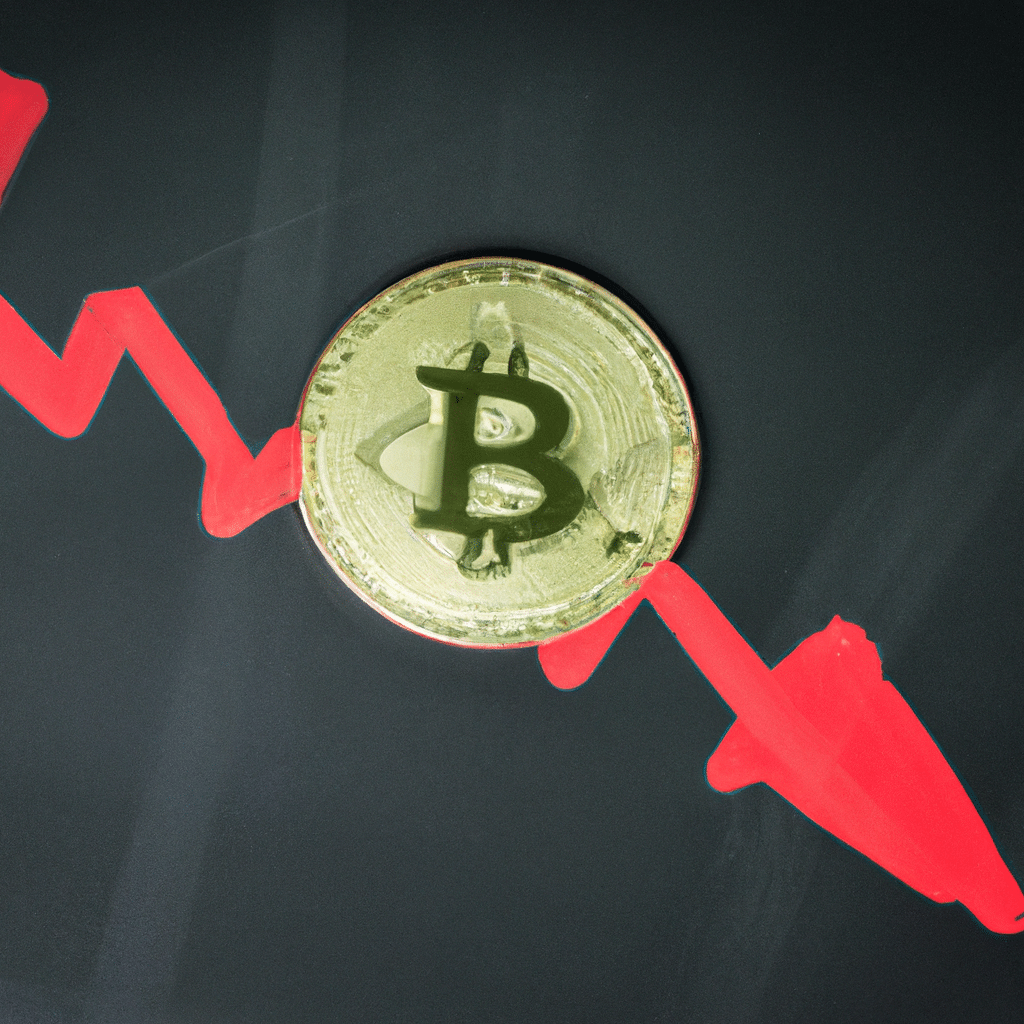Cryptocurrency Bitcoin has been subject to much speculation and discussion, particularly when it comes to predicting its price. Numerous experts have shared their insights and forecasts, aiming to provide valuable information for investors and enthusiasts alike. Understanding these predictions can help individuals make informed decisions in the volatile world of cryptocurrencies. In this article, we explore what experts have to say about Bitcoin’s price prediction.
- 1. Introduction
- 1.1. What is cryptocurrency?
- 1.2. What is Bitcoin?
- 1.3. Importance of Bitcoin price prediction
- 1.4. Factors influencing Bitcoin price
- 1.5. Methods of Bitcoin price prediction
- 2. Historical Bitcoin Price Analysis
- 2.1. Early days of Bitcoin
- 2.2. Bitcoin price volatility
- 2.3. Major price milestones
- 2.4. Historical price patterns
- 2.5. Impact of external events on Bitcoin price
- 3. Current Trends and Market Analysis
1. Introduction
Cryptocurrency has gained significant popularity in recent years, with Bitcoin being the most well-known and widely used digital currency. As the value of Bitcoin continues to fluctuate, experts have been trying to predict its future price. This article explores what some of these experts have to say about the Bitcoin price prediction.
1.1. What is cryptocurrency?
Cryptocurrency refers to a type of digital or virtual currency that utilizes cryptography for security. Unlike traditional currencies issued by governments, cryptocurrencies are decentralized and operate on a technology called blockchain. This technology ensures transparency, security, and immutability of transactions.
The most well-known cryptocurrency is Bitcoin, which was invented in 2009 by an anonymous person or group known as Satoshi Nakamoto. Bitcoin is often referred to as digital gold and has gained significant popularity and value over the years.
Cryptocurrencies can be used for various purposes, including online transactions, investments, and even as a store of value. They offer several advantages such as low fees, fast transactions, and the potential for high returns. However, they also come with risks such as price volatility and security concerns.
As the cryptocurrency market continues to evolve, it is important to stay updated with the latest trends and expert opinions. This article will explore the topic of cryptocurrency, with a particular focus on Bitcoin price predictions by industry experts.
1.2. What is Bitcoin?
Bitcoin is a decentralized digital currency that was created in 2009 by an unknown person or group of people using the name Satoshi Nakamoto. It is a form of cryptocurrency, meaning it uses cryptography to secure transactions and control the creation of new units. Unlike traditional currencies, such as the US dollar or Euro, Bitcoin operates on a peer-to-peer network without the need for a central authority or government. This means that transactions can be made directly between users without the involvement of intermediaries like banks.
Bitcoin transactions are recorded on a public ledger called the blockchain. This blockchain technology ensures transparency and security by verifying and validating each transaction. Additionally, Bitcoin transactions are pseudonymous, as users are identified by their public keys rather than personal information.
One of the key features of Bitcoin is its limited supply. There will only ever be a maximum of 21 million Bitcoins in existence, which makes it a scarce asset. This scarcity has contributed to Bitcoin’s popularity as a store of value and investment asset.
Since its inception, Bitcoin has experienced significant price volatility. Its value is determined by supply and demand factors, as well as market speculation. As a result, Bitcoin price predictions by experts vary widely. Some experts believe that Bitcoin will continue to increase in value, citing factors such as increased adoption, institutional investment, and global economic uncertainty. Others caution that Bitcoin’s price could be susceptible to market manipulation and regulatory challenges.
Overall, Bitcoin is a groundbreaking technology that has revolutionized the concept of money. It offers individuals a decentralized and secure means of conducting transactions, while also posing unique challenges and opportunities for investors and financial experts.
1.3. Importance of Bitcoin price prediction
Bitcoin price prediction is of great importance in the world of cryptocurrency. As the most popular and widely recognized digital currency, Bitcoin’s price movements have a significant impact on the entire crypto market. Investors, traders, and enthusiasts closely follow Bitcoin price predictions to make informed decisions and anticipate future market trends.
The volatility of Bitcoin’s price makes accurate predictions challenging, but experts use various techniques and analysis to forecast its future value. These predictions not only help individuals and businesses in their investment strategies but also shape the overall perception and adoption of Bitcoin.
In this article, we will explore what experts have to say about Bitcoin price prediction. By understanding their insights and methodologies, readers can gain valuable knowledge to navigate the dynamic and ever-changing world of cryptocurrency.
1.4. Factors influencing Bitcoin price
The price of Bitcoin is influenced by various factors that play a significant role in its volatility and value. Understanding these factors is crucial for predicting the future price movements of this popular cryptocurrency.
One of the main factors influencing the price of Bitcoin is market demand. As with any asset, the principle of supply and demand applies to Bitcoin as well. When the demand for Bitcoin surpasses its supply, the price tends to increase. Conversely, if the supply exceeds the demand, the price may decline.
Another factor that impacts the price of Bitcoin is investor sentiment. Bitcoin is often viewed as a speculative investment, and its price can be heavily influenced by market sentiment. Positive news, such as adoption by major companies or governments, can drive up the price, while negative news or regulatory actions can cause it to plummet.
The overall market conditions and global economic factors also play a role in Bitcoin price fluctuations. Economic indicators, geopolitical events, and monetary policies implemented by central banks can have ripple effects on the cryptocurrency market, including Bitcoin.
Additionally, technological advancements and innovations within the blockchain industry can impact Bitcoin’s price. Improvements in scalability, security, and utility of the Bitcoin network can attract more users and investors, leading to a potential increase in price.
It is important to note that Bitcoin’s price is highly volatile and can be influenced by a combination of these factors, as well as other market dynamics. Therefore, accurately predicting its future price is a challenging task that requires a comprehensive analysis of the ecosystem and various external factors.
1.5. Methods of Bitcoin price prediction
Bitcoin price prediction methods are crucial for investors and enthusiasts looking to forecast the value of this popular cryptocurrency. With the volatile nature of Bitcoin, various experts have developed different techniques to predict its price. These methods utilize a combination of technical analysis, market trends, historical data, and even sentiment analysis. By understanding and utilizing these prediction methods, investors can make more informed decisions and potentially maximize their profits in the ever-changing Bitcoin market.
2. Historical Bitcoin Price Analysis
Bitcoin, the first cryptocurrency, has had a tumultuous price history since its inception. Understanding the historical price analysis can provide valuable insights into the potential future movement of Bitcoin’s price.
In its early years, Bitcoin experienced extreme price volatility. From its creation in 2009 until 2011, the price remained relatively low, with occasional spikes and drops. However, in 2011, Bitcoin reached a milestone by surpassing the $1 mark for the first time, marking a significant increase in its value.
The year 2013 witnessed a remarkable bull run for Bitcoin. The price skyrocketed from around $13 in January to reach an all-time high of over $1,100 in December. This surge was mainly driven by increased media attention and growing adoption by businesses and individuals.
However, following the peak in 2013, Bitcoin experienced a major price correction, with the price dropping to around $200 in early 2015. This downward trend lasted for a couple of years, and Bitcoin struggled to regain its previous highs.
The year 2017 was a turning point for Bitcoin’s price. It started the year with a price of around $1,000 and witnessed a phenomenal bull run, surpassing all previous records. Bitcoin reached an all-time high of nearly $20,000 in December 2017, driven by increased investor interest and the introduction of futures trading.
Since then, Bitcoin has experienced both highs and lows. It faced a significant price correction in 2018, dropping to around $3,200. However, it has shown resilience and has been gradually recovering since then.
Bitcoin’s price history highlights the volatility and unpredictability of the cryptocurrency market. Experts have varying opinions on its future price movement, with predictions ranging from bullish to bearish. Understanding the historical price analysis can provide a foundation for making informed decisions about Bitcoin investments.
2.1. Early days of Bitcoin
The early days of Bitcoin saw the birth of a revolutionary digital currency that aimed to decentralize the financial system. Created in 2009 by an anonymous person or group of people using the pseudonym Satoshi Nakamoto, Bitcoin introduced the concept of a peer-to-peer electronic cash system. It offered a new way of conducting transactions without the need for intermediaries like banks or governments.
During its initial years, Bitcoin had a humble beginning with very little value. In fact, the first-ever Bitcoin transaction took place in 2010 when a programmer named Laszlo Hanyecz purchased two pizzas for 10,000 Bitcoins. This transaction is now famously known as the ‘Bitcoin Pizza Day’.
In the early days, Bitcoin faced skepticism and was often associated with illegal activities due to its anonymous nature. However, as more people started to understand its potential, the interest in Bitcoin grew, and its price started to increase gradually.
Historical Bitcoin price analysis reveals significant fluctuations throughout its existence. In 2011, the price of one Bitcoin reached $1 for the first time. This was followed by a period of growth, with the price peaking at around $31 in 2011 and then crashing down to $2 later that year.
The year 2013 witnessed a massive surge in Bitcoin’s price, with it reaching an all-time high of over $1,100. However, this was short-lived as the price fell to around $200 the following year.
The most significant price rally occurred in 2017 when Bitcoin reached an incredible peak of nearly $20,000. This led to a surge in popularity and attracted numerous investors and speculators to the cryptocurrency market. However, the price subsequently experienced a sharp decline, and by the end of 2018, it had dropped to around $3,000.
Bitcoin’s price has continued to be highly volatile, with periods of significant growth and decline. Despite this, many experts remain optimistic about its future and believe that its price will continue to rise in the long run.
2.2. Bitcoin price volatility
Bitcoin price has been known for its extreme volatility since its inception. The cryptocurrency market is highly susceptible to fluctuations, and Bitcoin is no exception. Its price can experience significant swings within short periods, making it a challenging asset for investors and traders.
To understand the historical price analysis of Bitcoin, it is crucial to examine its past performance. Over the years, Bitcoin’s price has displayed remarkable volatility, with both dramatic surges and sharp declines.
For instance, in 2017, Bitcoin witnessed an unprecedented rally, reaching its all-time high of nearly $20,000 in December. However, this was followed by a significant correction in the following year, as the price dropped to around $3,000.
Another notable event occurred in 2020 when Bitcoin experienced a severe price crash due to the global pandemic. In a matter of days, the price plummeted from around $10,000 to approximately $4,000.
These historical price fluctuations highlight the unpredictable nature of Bitcoin. It is crucial for investors to be aware of this volatility and carefully consider their investment strategies. While some traders thrive on the price swings and capitalize on them, others may find it challenging to navigate the market.
It is important to note that Bitcoin’s volatility is influenced by various factors, including market demand, regulatory developments, geopolitical events, and investor sentiment. These elements contribute to the price movements and can cause sudden spikes or drops.
As Bitcoin continues to gain mainstream recognition and adoption, its price volatility may gradually stabilize. However, it is unlikely to completely diminish, given the inherent nature of the cryptocurrency market.
In conclusion, Bitcoin’s price volatility has been a defining characteristic throughout its history. The cryptocurrency has experienced significant price swings, which can pose both opportunities and risks for investors. Understanding the historical price analysis and monitoring the market trends are essential for anyone interested in Bitcoin and its potential for future growth.
2.3. Major price milestones
Bitcoin has experienced several major price milestones since its inception. Here is a brief historical analysis of Bitcoin’s price.
1. The first significant milestone occurred on October 12, 2009, when Bitcoin was traded for the first time, establishing its initial price at $0.0009 per BTC.
2. On May 22, 2010, the first real-world transaction took place, where Laszlo Hanyecz purchased two pizzas for 10,000 BTC, setting the exchange rate at $0.0025 per BTC.
3. Bitcoin’s price remained relatively stable until February 9, 2011, when it reached $1 for the first time, marking a major psychological milestone.
4. The price continued to surge, and on June 2, 2011, Bitcoin hit a high of $10, representing a tenfold increase in just a few months.
5. The most significant milestone to date occurred on December 17, 2017, when Bitcoin reached its all-time high of nearly $20,000, sparking a global frenzy around cryptocurrencies.
6. Following the peak, Bitcoin experienced a significant correction, with its price dropping to around $3,000 by December 2018.
7. Throughout 2019 and early 2020, Bitcoin’s price remained relatively stable, fluctuating between $6,000 and $10,000.
8. In October 2020, Bitcoin broke the $10,000 barrier once again, reaching a price of around $13,000 as institutional investors showed increased interest.
9. In late 2020 and early 2021, Bitcoin experienced a remarkable price rally, surpassing its previous all-time high and reaching over $60,000 in March 2021.
10. Currently, Bitcoin’s price continues to be volatile, influenced by various factors such as regulatory developments, market demand, and investor sentiment.
2.4. Historical price patterns
Historical price patterns can provide valuable insights into the behavior of Bitcoin’s price over time. By analyzing past price movements, we can identify recurring patterns and trends that may help in predicting future price movements.
One common historical price pattern is the cyclical nature of Bitcoin’s price. Over the years, Bitcoin has experienced several boom and bust cycles, where its price skyrockets to new highs before crashing down. This pattern suggests that Bitcoin’s price is highly volatile and prone to rapid fluctuations.
Another historical price pattern is the correlation between Bitcoin’s price and market events. Significant events, such as regulatory announcements, global economic crises, or technological advancements, have often influenced Bitcoin’s price. For example, positive news about adoption or institutional investments in cryptocurrencies can drive up the price, while negative news can cause a decline.
Technical analysis is also commonly used to identify historical price patterns. Traders and analysts examine charts and indicators to spot trends, support and resistance levels, and other patterns that can indicate potential price movements. This approach considers factors like moving averages, trading volumes, and chart patterns to make predictions about future price trends.
However, it’s important to note that historical price patterns are not foolproof indicators of future price movements. The cryptocurrency market is highly speculative and influenced by various unpredictable factors. While historical analysis can provide useful insights, it should be combined with other fundamental and technical analysis techniques for a more comprehensive prediction of Bitcoin’s price.
2.5. Impact of external events on Bitcoin price
External events have a significant impact on the price of Bitcoin. The cryptocurrency market is highly sensitive to various factors, both within and outside the industry. Understanding how external events influence Bitcoin’s price is crucial for predicting its future movements and making informed investment decisions.
One notable external event that has affected Bitcoin’s price is the global financial crisis of 2008. Following the collapse of major financial institutions and the subsequent economic downturn, many people started losing faith in traditional financial systems. As a result, there was a surge in interest and demand for alternative financial assets, including Bitcoin. This increased demand led to a significant price increase for Bitcoin.
Another external event that influenced Bitcoin’s price is the halving events. Bitcoin’s protocol includes a mechanism called halving, which reduces the number of new Bitcoins issued to miners. This event occurs approximately every four years and has historically resulted in a bull run for Bitcoin. The anticipation and actual occurrence of halving events create a scarcity narrative around Bitcoin, driving up its price.
Furthermore, regulatory developments and government interventions can also impact Bitcoin’s price. For instance, when a country announces favorable regulations or adopts a friendly stance towards cryptocurrencies, it can attract more investors and result in a price surge. Conversely, negative regulatory actions or bans can lead to a decline in Bitcoin’s price.
Additionally, major security breaches or hacking incidents in the cryptocurrency industry can have a detrimental effect on Bitcoin’s price. When high-profile exchanges or wallets are compromised, it erodes trust and confidence in the security of cryptocurrencies, causing a temporary drop in prices.
Overall, external events such as financial crises, halving events, regulatory actions, and security breaches can significantly influence the price of Bitcoin. Monitoring and analyzing these events is crucial for understanding the dynamics of the cryptocurrency market and making accurate predictions about Bitcoin’s future price movements.
3. Current Trends and Market Analysis
The cryptocurrency market has been subject to numerous trends and market analysis in recent years. One of the most popular digital currencies, Bitcoin, has been a topic of interest for both experts and enthusiasts. Predicting the price of Bitcoin has become a significant aspect of market analysis, as investors and traders seek to make informed decisions.
Experts have varying opinions on the future price of Bitcoin. Some believe that the value of Bitcoin will continue to rise, citing factors such as increasing adoption, limited supply, and institutional investments. They argue that as more individuals and businesses accept Bitcoin as a form of payment, the demand will increase, leading to a higher price.
On the other hand, some experts predict a decline in the price of Bitcoin. They argue that the market is highly volatile and can be influenced by factors such as regulatory actions, technological advancements, and market sentiment. They believe that the price of Bitcoin might experience significant fluctuations and may even face a bearish trend.
It is important to note that Bitcoin price prediction is speculative in nature and should not be considered as financial advice. The cryptocurrency market is highly unpredictable, and various external factors can impact its price. Therefore, it is crucial for investors and traders to conduct thorough research, analyze market trends, and consult with financial professionals before making any investment decisions.
3.1. Current state of the cryptocurrency market
The current state of the cryptocurrency market is highly dynamic and continuously evolving. With the rise of Bitcoin and other digital currencies, the market has witnessed significant fluctuations in recent years.
One of the key trends in the cryptocurrency market is the increasing adoption and recognition of Bitcoin as a legitimate investment asset. Bitcoin, being the first and most well-known cryptocurrency, has gained widespread popularity among investors and the general public. Institutional investors, such as hedge funds and asset management firms, have started allocating a portion of their portfolios to Bitcoin, thereby boosting its market value.
Another trend in the cryptocurrency market is the growing acceptance of digital currencies by mainstream businesses. Many online retailers and service providers now accept Bitcoin as a form of payment, which has further fueled its demand and value. Additionally, some countries have even started exploring the possibility of creating their own digital currencies, indicating a shift towards widespread acceptance.
Market analysis reveals that the volatility of the cryptocurrency market remains a significant challenge. Prices of cryptocurrencies, including Bitcoin, are highly volatile and can experience sudden and substantial fluctuations within short periods. This volatility is influenced by various factors, including regulatory developments, market sentiment, and technological advancements.
Experts predict that the future of the cryptocurrency market will be shaped by factors such as regulatory frameworks, institutional adoption, and technological advancements. As governments establish clearer regulations and guidelines for cryptocurrencies, it is expected that more institutional investors will enter the market, leading to increased stability and growth.
In conclusion, the current state of the cryptocurrency market is characterized by its dynamic nature and increasing acceptance. Bitcoin continues to dominate the market, and its value is influenced by various factors. With ongoing developments and growing institutional interest, the future of the cryptocurrency market holds great potential.
3.2. Bitcoin’s dominance in the market
Bitcoin’s dominance in the market:
Bitcoin has been the undisputed leader in the cryptocurrency market for quite some time now. With a market dominance of over 60%, it continues to reign supreme. This dominance is a result of several factors, including its first-mover advantage, widespread adoption, and recognition as the most valuable and trusted cryptocurrency.
Current Trends and Market Analysis:
The current trends in the Bitcoin market indicate a bullish sentiment. Despite occasional price fluctuations, Bitcoin has consistently shown an upward trajectory. This can be attributed to various factors such as increased institutional interest, growing acceptance by mainstream financial institutions, and the overall positive sentiment surrounding cryptocurrencies.
Market analysis suggests that Bitcoin’s price is likely to continue its upward trend in the foreseeable future. Experts predict that it could reach new all-time highs, potentially surpassing its previous peak. This optimistic outlook is fueled by the increasing demand for Bitcoin as a store of value and a hedge against inflation.
While there are potential risks and uncertainties associated with any investment, Bitcoin’s dominance and positive market trends make it an attractive option for investors and traders seeking long-term growth and potential profits.
3.3. Market sentiment towards Bitcoin
The market sentiment towards Bitcoin has been a topic of great interest and speculation. As the leading cryptocurrency, Bitcoin’s price fluctuations often reflect the overall sentiment of the market. Over the years, Bitcoin has experienced both extreme volatility and remarkable growth, leading to a wide range of opinions and predictions from experts and investors alike.
Currently, the market sentiment towards Bitcoin remains largely positive. This can be attributed to several factors, including increased institutional adoption, growing mainstream acceptance, and the overall bullish sentiment in the cryptocurrency market. Many investors and experts believe that Bitcoin’s price will continue to rise in the near future.
One key trend that has contributed to the positive market sentiment is the growing interest from institutional investors. Major financial institutions and corporations have started to allocate a portion of their portfolios to Bitcoin, recognizing its potential as a store of value and a hedge against inflation. This institutional adoption has not only increased Bitcoin’s credibility but has also attracted more retail investors, further driving up the demand and price.
Another factor contributing to the positive market sentiment is the increasing acceptance of Bitcoin in mainstream industries. More and more companies, including renowned names like Tesla and PayPal, have started accepting Bitcoin as a form of payment. This integration of Bitcoin into everyday transactions has helped solidify its position as a legitimate currency and store of value.
Market analysis also plays a crucial role in determining the sentiment towards Bitcoin. Various technical indicators and chart patterns are closely monitored by traders and analysts to predict price movements. While there are always different opinions, many experts believe that Bitcoin’s long-term trend is upward, supported by factors such as limited supply, halving events, and increasing global adoption.
However, it is important to note that market sentiment can change rapidly, and Bitcoin’s price is highly volatile. The cryptocurrency market is still relatively new and can be influenced by various external factors, such as regulatory changes, geopolitical events, and market manipulation. Therefore, investors and traders should approach Bitcoin with caution and conduct thorough research before making any investment decisions.
3.4. Key players in Bitcoin market
The key players in the Bitcoin market play a crucial role in shaping the current trends and market analysis of the cryptocurrency. These players include individuals, companies, and institutions that significantly impact the Bitcoin price and its overall market dynamics.
One of the key players in the Bitcoin market is Bitcoin miners. These individuals or groups use powerful computers to solve complex mathematical problems and validate transactions on the Bitcoin network. Miners are rewarded with newly minted Bitcoins, contributing to the overall supply of the cryptocurrency.
Another important player is Bitcoin exchanges. These platforms allow users to buy, sell, and trade Bitcoins with various other cryptocurrencies or fiat currencies. Exchanges provide liquidity to the market and determine the Bitcoin price based on supply and demand dynamics.
Furthermore, institutional investors have become significant players in the Bitcoin market. Large financial institutions, such as hedge funds and investment firms, have started investing in Bitcoin, considering it as a potential store of value and hedge against inflation. The entry of institutional investors has brought more legitimacy and stability to the cryptocurrency market.
Additionally, regulatory bodies and government agencies play a crucial role in shaping the Bitcoin market. Their decisions regarding legal frameworks, taxation policies, and regulations have a significant impact on Bitcoin’s acceptance and adoption. Positive regulatory developments can boost investor confidence and drive the market forward.
Lastly, influential individuals and industry leaders who publicly endorse or criticize Bitcoin can also influence market trends. Their statements, opinions, and actions can create significant price movements and shape market sentiment.
Overall, the key players in the Bitcoin market, including miners, exchanges, institutional investors, regulatory bodies, and influential individuals, collectively contribute to the current trends and market analysis of the cryptocurrency.
3.5. Bitcoin price analysis
The current trends and market analysis of Bitcoin price are crucial factors to consider when predicting its future value. Experts closely monitor the fluctuations and movements in the cryptocurrency market to gain insights into Bitcoin’s price behavior.
One significant aspect of Bitcoin’s price analysis is its volatility. The value of Bitcoin can experience rapid and substantial changes within short periods. This volatility stems from various factors, including market demand, investor sentiment, regulations, and technological advancements.
Market analysis involves studying historical price data, chart patterns, trading volume, and market sentiment indicators. By analyzing these factors, experts can identify potential trends and patterns that may influence Bitcoin’s price in the future.
Furthermore, market sentiment plays a vital role in Bitcoin’s price analysis. Positive sentiment, such as favorable news, partnerships, or regulatory developments, can drive the price upwards. Conversely, negative sentiment, such as security breaches or regulatory crackdowns, can cause a decline in Bitcoin’s value.
It is important to note that Bitcoin’s price analysis is speculative in nature and subject to various interpretations. While experts use technical analysis tools and fundamental indicators, accurately predicting Bitcoin’s future price remains challenging. Therefore, it is advisable to approach price predictions with caution and consider multiple expert opinions.
Conclusion
In conclusion, experts have varying opinions on the future price of Bitcoin. While some predict a significant increase, others believe it may experience a decline. It is important for investors to conduct thorough research and analysis before making any investment decisions in the cryptocurrency market.





